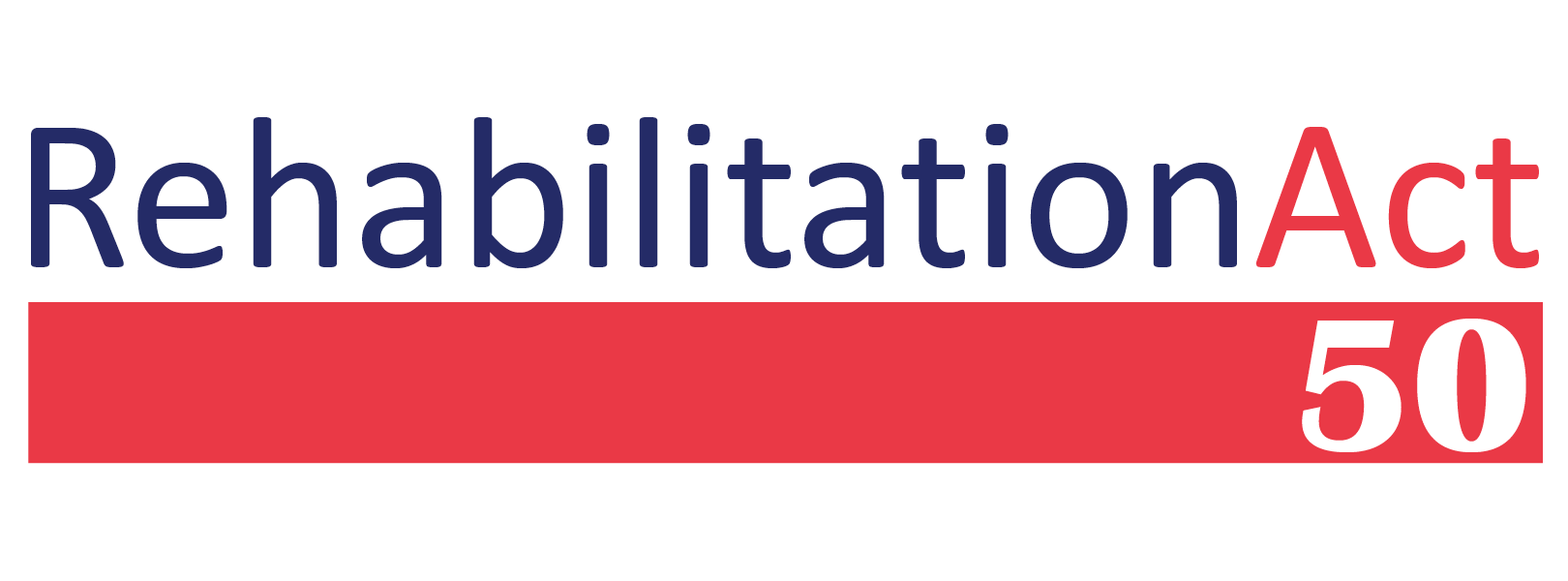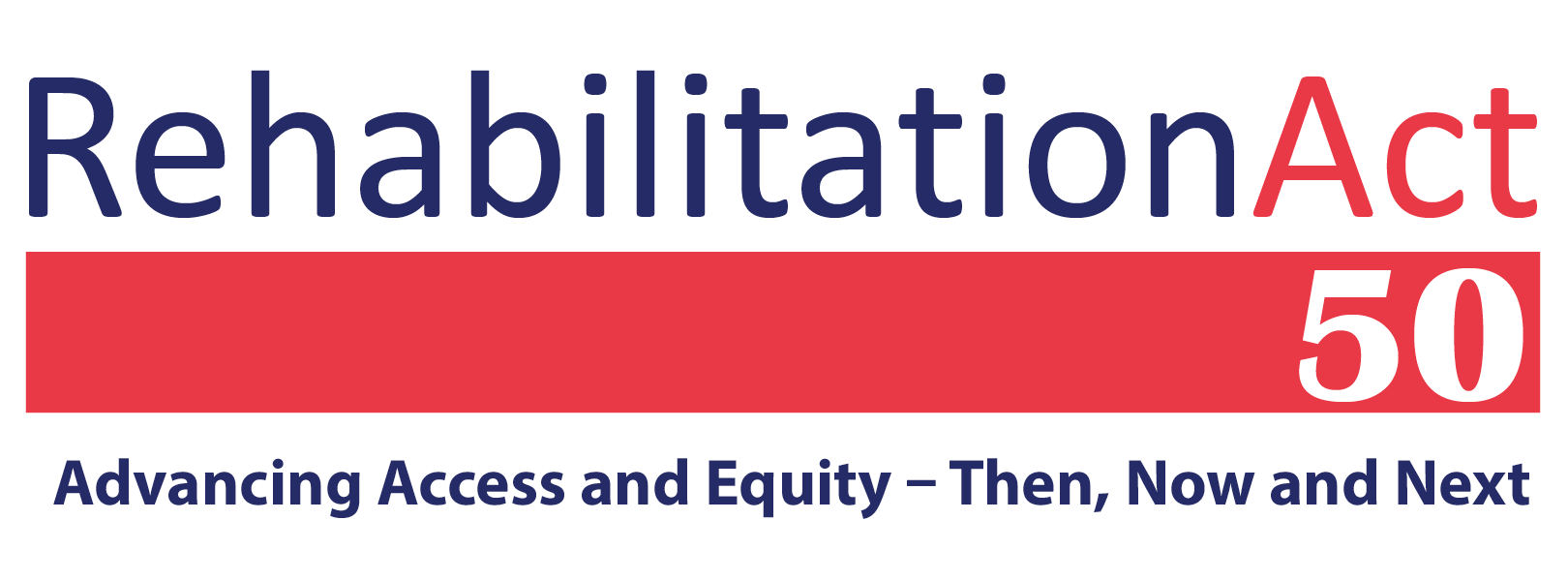
This year marks the 50th anniversary of the passage of the Rehabilitation (Rehab) Act of 1973—the first federal legislation to address access and equity for people with disabilities. To honor this major milestone, ODEP will be conducting a variety of activities throughout the year, all centered on the theme “Advancing Access and Equity: Then, Now and Next.” Read the news release.
The Rehab Act is often spoken of in terms of various sections, several of which affect employment and career readiness and inform the U.S. Department of Labor’s work. This video explores these sections and their impact—then, now and next—on advancing access and equity for people with disabilities.
Brief videos focused on individual sections are also available:
Anniversary Blog Series
Examining 50 Years of the Rehabilitation Act of 1973 – Section 508 – In the first post in DOL’s Rehab Act blog series, ODEP Senior Policy Advisor Nathan Cunningham interviews Sachin Pavithran, Executive Director of the U.S. Access Board, about the impact of Section 508. Enacted to ensure federal agencies’ information and communications technology is accessible to people with disabilities, Section 508 is an important part of the Rehab Act.
Examining 50 Years of the Rehabilitation Act of 1973 – Section 501 – In the second post in DOL’s Rehab Act blog series, ODEP Chief of Staff Anupa Iyer Geevarghese interviews Associate Director of the Equal Employment Opportunity Commission (EEOC) Office of Federal Operations Dexter Brooks and former EEOC Commissioner Chai Feldblum about Section 501 of the Rehab Act and its important role in increasing access and equity for disabled people.
Examining 50 Years of the Rehabilitation Act of 1973 – Section 504 – In the third post in DOL’s Rehab Act blog series, ODEP interviewed four diverse young people about the importance of Section 504 of the Rehab Act and the Americans with Disabilities Act (ADA). Each shared their perspective on how the laws have advanced access and equity for them individually and others with disabilities. Section 504 prohibits discrimination against people with disabilities by any program or activity that is federally funded or conducted, and it helped lay the foundation for the ADA.
Examining 50 Years of the Rehabilitation Act of 1973 – Section 503 – In the fourth post in DOL’s Rehab Act blog series, ODEP Deputy Assistant Secretary Jennifer Sheehy interviews Office of Federal Contract Compliance Programs (OFCCP) Acting Director Michele Hodge about the important role Section 503 of the Rehabilitation Act—which is enforced by OFCCP—plays in advancing access and equity for people with disabilities.
Examining 50 Years of the Rehabilitation Act of 1973 – Advancing Access and Equity for Individuals with Disabilities – In the fifth and final post in DOL’s Rehab Act blog series, ODEP Assistant Secretary Taryn Williams discusses changes in the disability employment landscape since the passage of the Rehabilitation Act of 1973 and the department’s commitment to continuing progress made by advancing competitive integrated employment for people with disabilities.
Rehab Act Resources
ODEP's Employer Assistance and Resource Network on Disability Inclusion (EARN) marks the 50th anniversary of the Rehabilitation Act of 1973 by adding two new resources on the federal government's Schedule A hiring authority to its Section 501 Info Center. This info center includes a collection of guides and information federal employers can explore to bolster their diversity, equity, inclusion and accessibility (DEIA) goals as they relate to the Rehab Act and become a model employer of people with disabilities.
- Resource Guide: Schedule A Excepted Service Hiring Authority for People with Disabilities
- Frequently Asked Questions About the Schedule A Excepted Service Hiring Authority for People with Disabilities
On the 50th anniversary of the Rehabilitation Act of 1973, the U.S. Equal Employment Opportunity Commission (EEOC) and DOL released a resource guide to help companies better understand the recruitment, hiring and employment of disabled people. The guide includes important information about the Rehab Act for employees and employers in the federal sector, including federal contractors; where to turn for help; examples of best practices; links to relevant agency publications; and additional resources.


